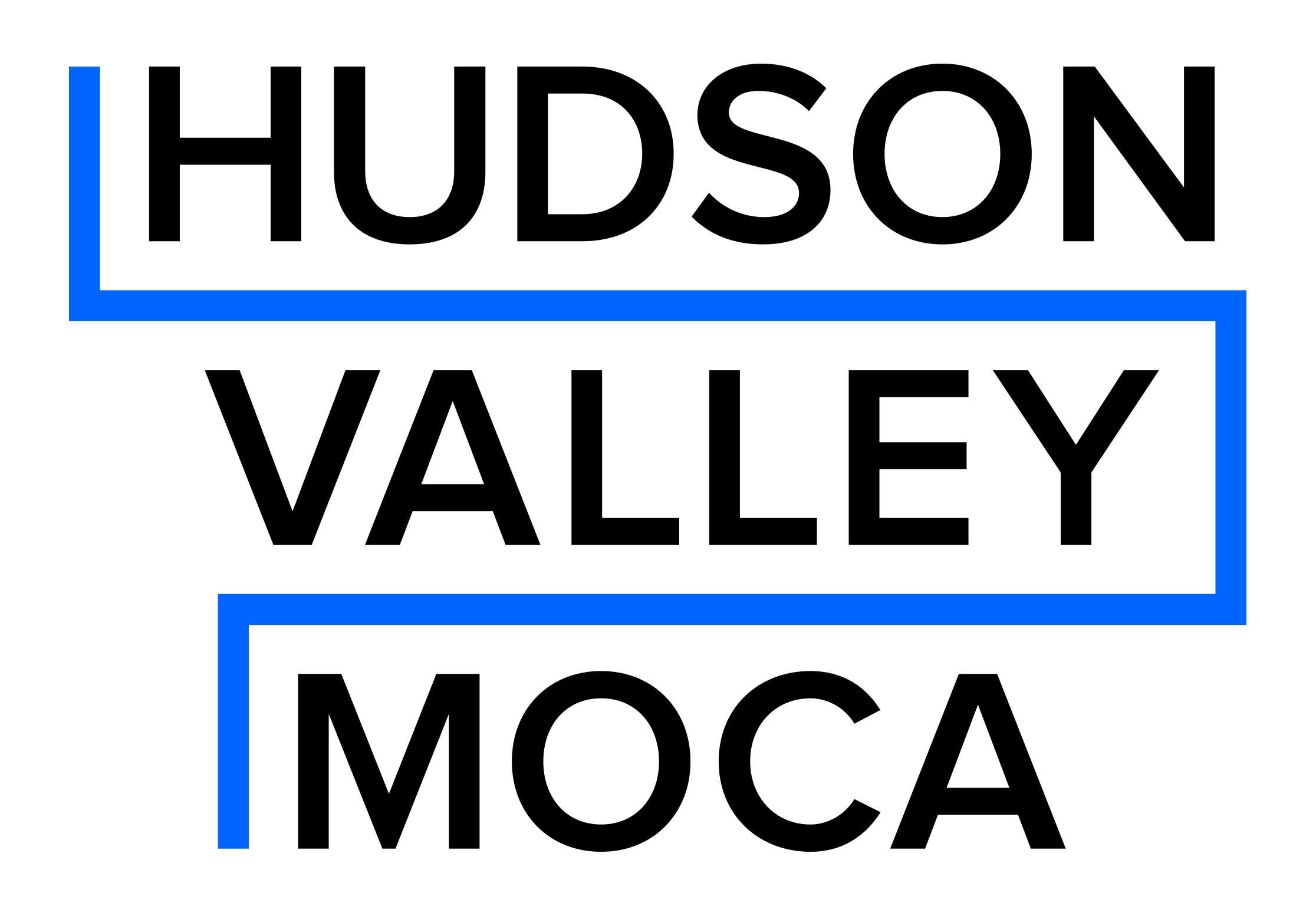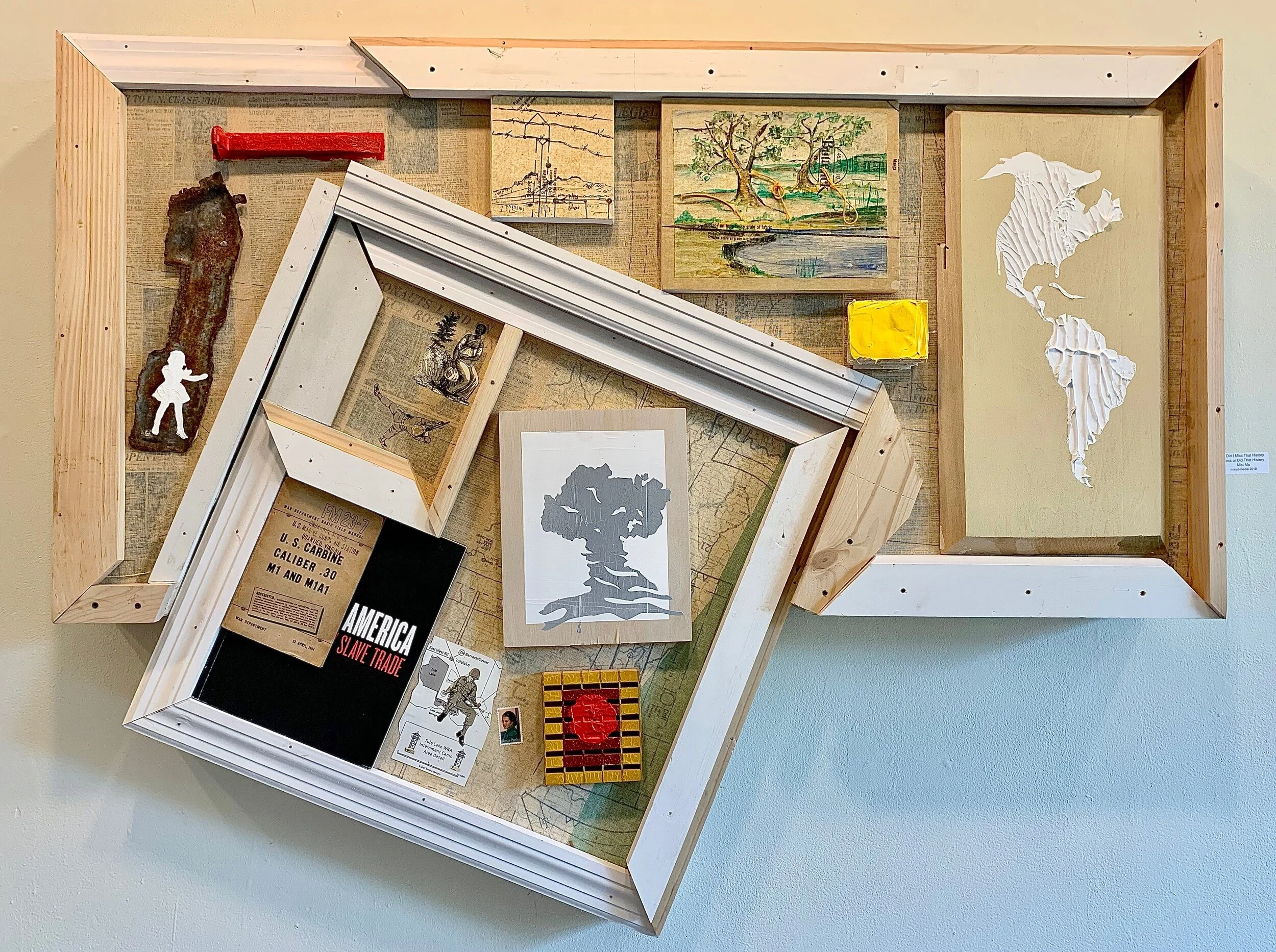On view online March 14, 2019 - April 30, 2020
.edu: Art Faculty of the Hudson Valley
“The diversity and strength of the works by artist educators working in the Hudson Valley was not surprising given our proximity to NYC. I thoroughly enjoyed and learned from the experience.”
-Amy Lipton, Co-director, ecoartspace
Hudson Valley MOCA is featuring “influencers.” We don’t mean the young Instagrammers touting products that will change your life. We’re presenting those who truly influence us – educators whose own practices offer a critical perspective on the current state of affairs in contemporary art and an indication of what is yet to come.
.edu: Art Faculty of the Hudson Valley showcases work by 14 art faculty from eight higher education institutions throughout the Hudson Valley. On view is an eclectic mix of two- and three-dimensional pieces, including video and installation, abstraction and representation, ranging in scale from intimate to monumental. The artists explore themes including climate change and social justice. Nicole Maloof’s video ponders “What color is a banana?” while Aaron Krach’s Indestructible Artifacts declares “your face feels like home” while you sip from its lip.
“As a participant in the jurying process, I was delighted by the level of skill and creativity in artists working and teaching throughout the Hudson Valley. In my view, the resulting .edu exhibition is filled with works that are moving, surprising and fun.” -Susan Hodara, Art writer
Featured Artists:
Nancy Bowen (Purchase College), Bryan Czibesz (SUNY New Paltz), Donise English (Marist), Aaron Krach (Purchase College), Nicole Maloof (Sarah Lawrence College), Itty S. Neuhaus (SUNY New Paltz), John O’Connor (Sarah Lawrence College), Rachel Owens (Purchase College), Janine Polak (Purchase College), Gina Ruggeri (Vassar), Christina Tenaglia (Vassar), Josette Urso (WCC - White Plains), Randy Williams (Manhattanville)
This exhibition was during the 2020 COVID-19 pandemic. We asked our artists about how their roles as educators influences their practice and how they are dealing with ‘Distance Learning’ as we have seen the tremendous shift in education. See their answers below!
RANDY WILLIAMS
1.How has being an educator influenced your studio practice?
This is a curious question, it can be reversed, and the answer would be the same. How has being an artist influenced your teaching practice? Years ago I felt that my teaching came second to my studio practices. After some exhausting reflection, I came to realize that sound teaching is an aesthetic practice. An effective teacher must use the same initiative and creative cunning that they use in making art. Being an educator influences my studio practice by helping me to remember and understand the importance of being a beginner. My students constantly remind me of the beginners' passion. My students help me to be tenuous when confronting failure. And I learn from them that failure is an opportunity to fuel passion and to make more art after making art. My teaching is often a mirror; if I look into it and don't see a reflection of a practicing artist, I'm confronted with being a fraud. My art students help keep both my teaching and art practice credible. Being an educator has helped me to continue learning and using that valued knowledge to aid my teaching and advance my own work. Being an artist and teaching has become seamless; I am a teaching artist.
2.What are your thoughts for Distance Learning in visual art? You give any advice to other art educators that have had to move to a digital platform?
I am reminded of a line from John Milton's Paradise Lost, "To reign is worth ambition though in Hell: Better to reign in Hell, than serve in Heaven." Teaching in the studio is Heaven. There is no substitute for teaching in a studio in front of your students. The wide eye heartbeat of excited students with their occasional epiphanies. Personal contact can't be replaced by computer screens. My advice for Distance Learning is to remember the comfort of teaching in the studio and use our memory of creative activities when designing programs for online teaching. I would suggest that to support our distance learning programs, we should collaborate with art forms and artists from other disciplines to help inspire our students. The most important advice I can give is to do the near-impossible, and that is to be accessible to our students. Students should also be encouraged to become acquainted with old friends and make new friends with books and reading.
DONISE ENGLISH
1.How has being an educator influenced your studio practice?
Working with students gives me the opportunity to remind myself of the fundamental ideas behind all art-making. I'm also able to see and understand things in my own work more quickly and clearly: relationships, mistakes, unintended and accidental mistakes that prove to be fortuitous.
2.What are your thoughts for Distance Learning in visual art? You give any advice to other art educators that have had to move to a digital platform?
Regarding Distance Learning, visual arts were not intended to be taught online. I'm trying to figure out ways to accomplish what we do in person in the class studio. We can't cover it all and miss many of the nuances that happen one-on-one, e.g., explaining a sense of touch or how to mix a precise color, but I believe that there are things we can do to make the experience interesting and satisfying. There are a number of apps (Procreate for one) that can allow a student to send an image and then you can draw on top of it to make suggestions and corrections. This moment in time is forcing us to be creative in our approach to teaching and to use tools that are second-nature to students.
CHRISTINA TENAGLIA
1. How has being an educator influenced your studio practice?
Working with students has allowed me to be more open to and accepting of moments of failure and the process of working through these moments. They are always present, but they seem more like opportunities now than before.
2. What are your thoughts for Distance Learning in visual art? Can you give any advice to other art educators that have had to move to a digital platform?
I am trusting in my students. We are doing this together - they are doing as much as I am, experimenting and pulling from their surroundings and experiences, as we collectively and individually figure this all out.
JOSETTE URSO
1. How has being an educator influenced your studio practice?
A high-energy classroom environment is exciting for the students but also for the instructor. I am always exploring new and unexpected projects for my students. I gravitate towards projects that are simultaneously simple and complex, engaging on many levels and that most unexpectedly put the students in unfamiliar territory. This is also the way I approach my own work, so for me teaching is part of an endless feedback loop with my students. Teaching keeps me on my toes and what goes on in the classroom always works its way back into my own studio practice.
Over the years I have taught students of all levels, from those seeking an art degree to those in continuing education programs. I remain connected with many of my former students, and after they leave my class, we often continue to share a network of information about their work, exhibitions and other events in the art world.
2. What are your thoughts for Distance Learning in visual art? Can you give any advice to other art educators that have had to move to a digital platform?
This spring, my scheduled teaching was workshop based and all remaining classes have been cancelled or postponed - so I have not yet moved to teaching using a digital platform. But I do feel that embarking on Distance Learning is a chance to discover new ways of interacting with our students.
Students and Art Educators are fortunate to have this option now and without it classrooms and visual art education would be on hold. Imagine if we found ourselves in this current situation in the early 1990s
















